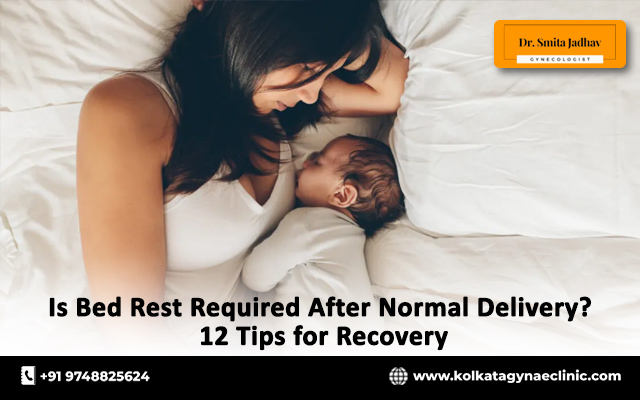After the intense experience of childbirth, many new mothers wonder about the necessity of bed rest. Traditionally, bed rest was often advised post-delivery, but contemporary medical advice emphasizes a more balanced approach to recovery. Let’s determine whether bed rest is required after a normal delivery and explore 12 tips as stated by the top gynecologist to aid in a smoother recovery process.
Is Bed Rest Necessary?
The notion of bed rest after childbirth comes from a time when recovery practices were more conservative. Today, doctors generally encourage early mobilization unless there are specific medical reasons for prolonged rest. Movement and light activity can actually promote healing and prevent complications such as blood clots and muscle stiffness.
Tips for Recovery After Normal Delivery
- Early Mobilization: Within hours of delivery, gynecologists often encourage new mothers to get out of bed and move around gently. This helps improve circulation, prevents blood clots and initiates the recovery process.
- Pelvic Floor Exercises: Kegel exercises can strengthen the pelvic floor muscles weakened during childbirth, promoting healing and preventing urinary incontinence.
- Hydration and Nutrition: Drinking plenty of water and eating nutritious meals are crucial for replenishing energy levels and supporting breastfeeding if chosen.
- Pain Management: Managing postpartum pain with prescribed medications can make the movement more comfortable.
- Rest and Sleep: While constant bed rest isn’t necessary, ensuring adequate rest and sleep whenever possible is important for recovery and overall well-being.
- Supportive Undergarments: Wearing supportive underwear can provide comfort and stability as abdominal muscles regain strength after your normal delivery.
- Care for Perineal Area: If there are tears or stitches, keeping the perineal area clean can aid healing and reduce discomfort.
- Emotional Support: Talking to loved ones can help manage the emotional challenges that often accompany the postpartum period.
- Avoiding Heavy Lifting: Initially, avoiding heavy lifting helps prevent strain on healing muscles and tissues.
- Gradual Resumption of Activities: Slowly incorporating light household chores or short walks into daily routines can help regain strength without overexertion.
- Monitoring Postpartum Bleeding: Understanding what constitutes normal postpartum bleeding versus excessive bleeding is essential; any concerns should be promptly addressed with a doctor.
- Follow-up Care: Attend postpartum check-ups as scheduled to ensure that both mother and baby are recovering well and any potential issues are addressed early.
Conclusion
Early mobilization, proper nutrition, pain management and emotional support play key roles in facilitating healing after normal delivery and adjusting to life with a newborn. Hence, it’s essential to listen to your body and seek guidance from doctors as needed.


